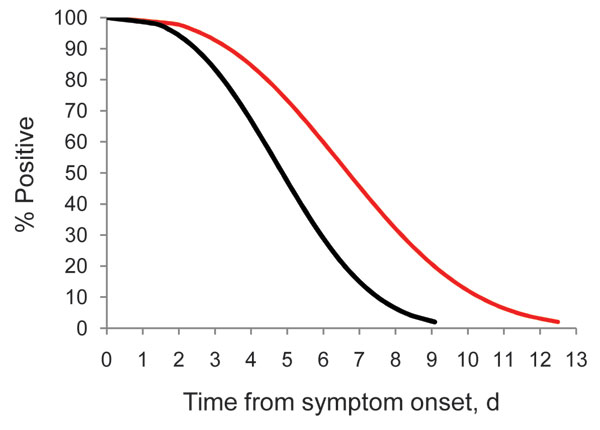Volume 17, Number 4—April 2011
Research
Shedding of Pandemic (H1N1) 2009 Virus among Health Care Personnel, Seattle, Washington, USA
Figure 1

Figure 1. Survival analysis model of pandemic (H1N1) 2009 virus shedding over time among infected health care personnel, Seattle, Washington, USA. Survival curves were modeled on data for 16 persons who became infected with pandemic (H1N1) 2009 virus after attending a work retreat in September 2009. A negative test result by rapid culture (black line) or real-time reverse transcription–PCR (red line) was the event of interest. Shedding duration determined by using real-time reverse transcription–PCR was significantly longer than that determined by rapid culture (p = 0.02).
Page created: July 25, 2011
Page updated: July 25, 2011
Page reviewed: July 25, 2011
The conclusions, findings, and opinions expressed by authors contributing to this journal do not necessarily reflect the official position of the U.S. Department of Health and Human Services, the Public Health Service, the Centers for Disease Control and Prevention, or the authors' affiliated institutions. Use of trade names is for identification only and does not imply endorsement by any of the groups named above.